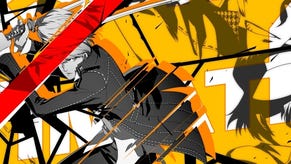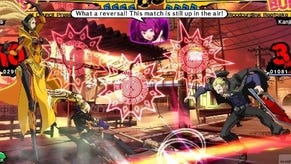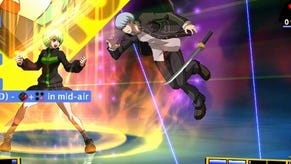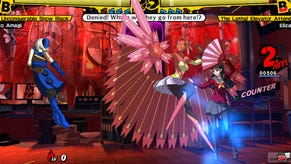Persona 4 Arena Preview: Back to School
Arc System's 2D fighter could be best in class.
Before Street Fighter 4 came along and re-popularised fighting games, the wait from one fighter to the next was fairly long. Indeed, if you look back at the games released on the 360 in the years before the 2009 revival, the only noteworthy titles are Dead or Alive 4, Virtua Fighter 5, SoulCalibur 4 and Mortal Kombat vs. DC Universe. Now compare this quartet to the games we've seen since the start of 2011 and you'll have a list of at least ten titles that includes everything from The King of Fighters 13 to Arcana Heart 3 and Skullgirls.
In effect, the market is being swamped with flashy fighting games that are all vying for our attention, but while choice is rarely a bad thing, the thought of adapting to a new system can sometimes be a bit off-putting. This is true for both casual and hardcore players as while a 3D veteran may be disinclined to make the 2D switch, someone who plays against the AI exclusively may find that one arcade gauntlet isn't too dissimilar to the last.
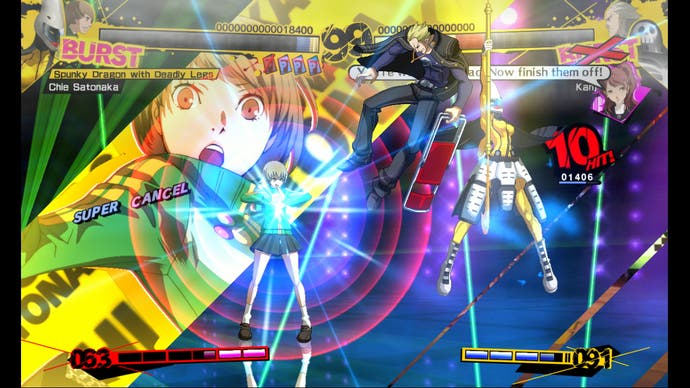
Modern fighting games have to strike a balance between mechanical depth, aesthetical finesse, accessibility, online stability and single player content, and out of all the fighting games I've sampled this year Persona 4 Arena seems to grasp this best.
Developed by the same studio that brought us the highly polished but devilishly technical Guilty Gear, Persona 4 Arena is a Japanese collaboration between Arc System Works and Atlus. Its story is set two months after the events of Persona 4 and features a roster of 13 characters that include Yukiko and Yosuke in addition to Mitsuru and Akihiko from Persona 3, and while this isn't the first time that Arc has fashioned a fighting game out of a popular IP (it has history with Fist of the North Star and Segoku Basara, after all) Arena is more akin to BlazBlue in terms of flair and ambition.
As a four-button fighter that mixes light and heavy strikes with weak and strong Persona moves, it's fair to say that Arena isn't short on subsystems. So much so that when you first run through Lesson Mode and learn how to pull off air throws and Instant Kill finishers, the class stays in session for 46 bite-sized tutorials. That may sound like a lot but the individual components are tailored to be as intuitive as possible. There isn't a single dragon punch motion and every character, except for the charge-based Mitsuru, has a repertoire that's built around quarter circle inputs.
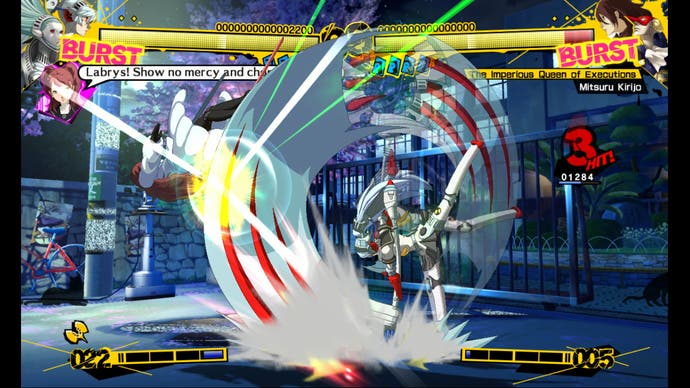
It's a move towards easing in newcomers that's far more elegant than the "Beginner Mode" from Continuum Shift. Both players use the same control scheme and both players can rapidly tap the light attack button to perform a short combo that does below average damage, but far from diluting the one-on-one exchanges, these Auto Combos deliver a stunted glimpse of what's possible when you push deeper into the advanced mechanics.
Although I didn't have time to dissect all the systems during my hands-on, one of the most interesting features was the All-Out Attack. This is a universal overhead (meaning it will beat a crouching block) that can be followed-up by rapidly pressing both attacks for up to 15 hits. By quickly tapping one of the Persona buttons once the assault is finished, you can either launch the opponent into the air for an aerial combo opportunity or knock them backwards to build some space.
It's not uncommon to see a button mashing mechanic in a sophisticated fighting game, but if you want to get the maximum number of hits while forcing your opponent into a vulnerable state you have to use precise timing. You also have to think about EX specials, a universal Furious Action attack that trades health for start-up invincibility and an Instant Block that's reminiscent of Mark of the Wolves - in addition to Arena's own brand of Bursts. These can escape assaults, extend combos or instantly charge your super meter if hit raw, and unlike the more punishing nature of BlazBlue there's no penalty for Bursting.
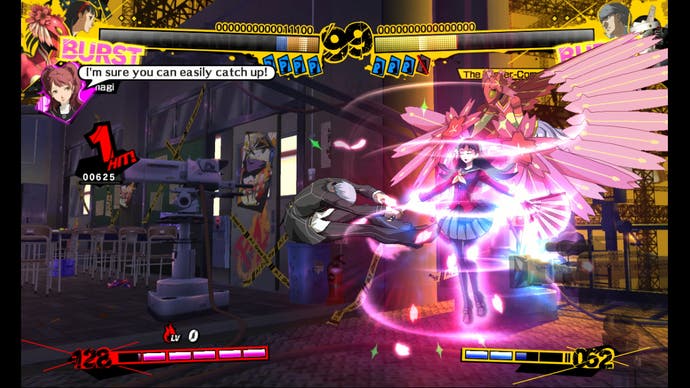
One way in which Arena resembles BlazBlue fairly closely, however, is in the diversity it offers with a comparatively small cast of characters. The mechanised Aigis, for instance, is a long-range fighter who can pepper the opponent with her limited supply of bullets while waiting for her highly mobile Orgia stance to recharge. Her Persona, the distinctly centurion-esque Athena, can extend her combos with a long-range slash or counter an opponent that's being a bit too predictable. All Personas are subject to a strict "four strikes and you're out for 11 seconds" rule, so you risk leaving yourself hamstrung if you spam Persona moves foolishly.
Another interesting partnership is Akihiko and Caesar. As a rushdown boxer, Akihiko uses a fighting style that's not too dissimilar to Street Fighter's Dudley with his multi-hit dash punches, crafty counters and evasive weaves. But unlike the classiest pugilist in gaming, Akihiko can call Caesar to drag the opponent towards him - Iron Tager and Magneto-style - or catch the opponent off-guard with an overhead sword. He even has a dedicated Cyclone gauge which, depending on the number of hits you manage to combo before cancelling into it, will increase the damage of his Cyclone Uppercut super.
I wish I had the space to talk about each character individually as they're all packed with personality and mechanical intrigue. Suffice to say that there's a deceptively boyish-looking detective who can setup Instant Kills by shooting the opponent until a special counter reaches zero; a book-wielding elevator attendant who can inflict all six status ailments; a grappler that fights with a foldaway chair; and an empty bear suit called Teddie who can stack three televisions on top of each other before flying out of the screens.

If you haven't played a Persona game before (and I have to admit, I've only played the third) all this may sound a tad outlandish. It is, of course, but that doesn't detract from the fantastic sprites and seamless animations that Arc has used to bring the Persona characters to life. I'd even go so far to say that it's raised the aesthetical benchmark set by BlazBlue. Plus if you happen to be a fan of the Persona JRPGs, then there's nothing quite like hearing the opening beats of Shoji Meguro's Iwatodai Dorm.
We've even been promised a Story Mode that'll take around 30 to 40 hours to complete, which considering the depth of the BlazBlue narrative isn't too hard to believe. As it stands though, Arc is putting together an enticingly rich fighting game that takes queues from its flagship series while lowering the point of entry for beginners. Not in a way that could be considered dumbing down, but in a way that forgoes complexity for complexity's sake.
The only question is whether the single player and online experiences can live up to the rest of the game. If they can, Persona 4 Arena has the potential to challenge Virtua Fighter 5: Final Showdown and the forthcoming Tekken Tag Tournament 2 as not only the best fighting game of the year, but perhaps, more crucially, the most well-rounded. It's not simply enough to suck players into the TV world anymore - you also have to give each of them a reason to stay.



